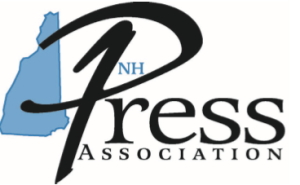
But the publisher, God bless his soul, Bob Melville, had faith in my ability, which, at that time in my life, only he recognized as something I should stick with and not give it up just because I struggled with two teeny words that opened the editorial and got it moving so the readers out there would not fall asleep getting past the lead sentence of my first attempt at an editorial that would have my name attached to it and be read and judged by thousands of readers, plus the fact that some of my sentences ran on too long, just like this one.
I chose to open the story with the two words "Go It." For an English major, as Publisher Melville was while being trained at the brainy Kent Prep School, then to continue at Harvard and come into newspaper life with English and Writing degrees, he questioned me closely as to the origin of the two words and how I planned to use them in a headline or story.
Understand that I was the paper's photographer and ad salesman also. I was doing well, but Publisher Melville wanted me to improve my writing and do it better, faster. So, since that day in 1970, I have been doing this craft of writing news and feature stories day in and day out.
As I think back, "Go It" was an odd way to introduce a story to readers. I had no license or experience to get "creative" or show off an oddball style that I was developing, it was simply what I had in my mind as I stood at my typewriter and thrashed out the story.
Another action of mine that irked some of the staff was not only my use of quirky words and sometimes corny heads or titles, but the subjects of my stories were "over the moon," a trite phrase that several used to describe someone's "knocking it out of the park," an equally as bad phrase that would pop up here and there in someone's news story. I cringed when that happened and vowed never to use those clichés I could avoid them.
One thing I possessed that no one else at the newspaper office had was my start-up collection of word books. Those are books dedicated to words and how to find and use the words I liked in my writing. My first word book was the 1959 edition of Strunk and White's "Elements of Style." I still have it, and I love it because it was my first in a collection I now have on my desk, which is mainly dedicated to different editions of the Strunk and White treasury of style books.
I have nearly two dozen others that I add to when I find a unique book of words, such as the last one I said back in 2019, written by word genius Benjamin Dreyer. The book is Dryer's English, An Utterly Correct Guide to Clarity and Style."
Other word wizard authors in my collection are Margaret Shertzer, Edward Seeber, Richard Lederer, William Zinsser, Kate Turabian, and Arthur Plotnik, which are in addition to my six different varieties of my cherished Strunk and White style books.
While doing a little looking around at some of the newer word books out there that MUST be added to my collection, one stood out and is on my list. It is "Friends with Words: Adventures in Languageland" by Martha Barnette.
Martha calls her book the "Word Nerd gift book of the year. She also has an on-air word program and has spent 20 years as co-host of the program, " A Way With Words." One of her reviewers says she is like the late Car Talk host, only her program is not about trucks and car parts; it is about words, language history, and stories.
Every week, I find there is so much more out there to read and learn from. I have been doing this writing activity for a long time. Still, some days, when I begin my writing session early in the morning, it is like the day so long ago I pondered and worried for several hours about how I would put together my first editorial back in 1970.
The backstory to all this would note that the two words came from a history piece I had read in 1969 in the hardcover version of American Heritage Magazine. The story described the discovery of some
odd-looking chunks" of gold-bearing ore in 1859, found in Washoe County, Western Utah Territory. It was carried 150 miles over the massive Sierra Nevada and ended up in a mining camp in the Grass Valley area of California.
From there, of course, sprang the great silver rush. California had its Gold Rush from 1848 to 1855. Then, it was silver from the Washoe area. That got everyone excited. From all that was coined, the phrase "Go It, Washoe!" I later found out that people read my editorial because they were curious about the headline.
Silly me. I thought it was my writing they wanted.
Have a story?
Let's hear it!
(802) 757-2773
(603) 787-2444
news@thebridgeweekly.com




